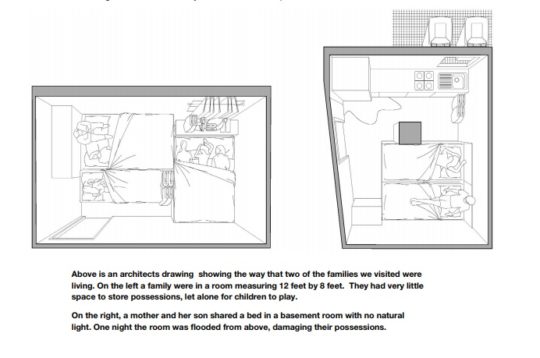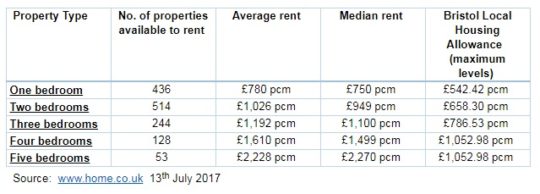Kettle packs and extreme overcrowding: the realities of temporary accommodation
Published: by Charlotte Gerada
Having to feed your family while trapped in just one room, with nothing other than a kettle, isn’t something you’d expect to hear about in Britain in 2017.
But this sadly, was the reality for residents living in Buckinghamshire, where an explosion in the number of homeless families meant the council was forced to house those people in temporary accommodation (TA). Local foodbanks responded by putting together ‘kettle packs’, because all that was in the rooms to cook with were kettles.
We know through our front-line services – and through meeting 10 councils across the country – that this situation unfortunately isn’t a one-off. Councils are now housing more than 77,000 homeless families in TA, including more than 120,000 children.
And many are living there much longer than intended. Government data finds 25% of people leaving TA in the last quarter had been living there for a year or more. Through our services, we know that many more are stuck for much longer.
The reality of life in TA
For anyone that hasn’t seen or lived in TA before, the standards and conditions vary considerably. But extreme overcrowding, disrepair, infestations and poor safety standards are commonplace, as our Green Book report found.

As its name suggests, TA is meant to provide urgent relief to those in housing need, with a clear plan for where residents will be moved onto next. But for many, TA has become a trap – a place from which those on low incomes can’t move on.
The LHA rate freeze is pushing families into TA
The freeze to Local Housing Allowance (LHA) is fueling the sharp increase in reliance of TA. Local Government Association survey results shows of the councils who said their per head costs on TA had increased, 76% (38 councils) said the LHA freeze was responsible for this rise.
LHA – the support 1.2 million low-income households receive to live in the private rented sector – has been frozen since 2016, while rents have continued to climb. This means for most there is a significant and ever-growing gap between LHA rates and the lowest local rents. As a result, struggling families end up getting into rent arrears and are being evicted.
When low-income renters turn to their local council for support, the barriers to renting are incredibly high. Not only do they have huge upfront costs (such as for deposits), but they are then faced with the very problem that made them homeless in the first place – LHA rates that don’t give them enough purchasing power to rent somewhere else.
LHA is too low for families to afford local rents
For most councils there’s a recurring theme: it has become incredibly hard to house low-income families.
Councils outside of the capital are having to grapple with London councils housing their low-income residents in their cheaper private rented sector stock, because LHA goes further outside the M25. Councils in Kent, Hampshire and the North are all competing with London.
Bristol Council recently wrote to government to illustrate how difficult housing low-income families has become. The table below shows how few properties are actually accessible to LHA claimants with current rates.

And landlords aren’t keen to rent to LHA claimants anymore, because rates are so low and they risk taking on tenants who’ll get into arrears.
Councils are spending enormous amounts of money and time trying to keep every family claiming LHA in their home. From financial incentives for landlords, to using budget to top up LHA – councils are trying every tactic in the book.
One council in Hampshire is having to take on properties much earlier than needed, as well as providing landlords with deposits, rent upfront and comprehensive wrap-around services for tenants. Another outer-London council hinted that it’s having to hand out thousands of pounds per tenancy to persuade landlords to take LHA claimants on.
With few affordable homes available locally, these families are often faced with no other choice to be housed in TA.
LHA is keeping families trapped in TA
The freeze to LHA is both fueling the numbers placed in TA, and preventing families from moving on into more suitable, long-term housing.
There is a huge backlog of TA residents who can’t move on because of the lack of affordable homes locally. TA is a costly housing solution and is an undesirable environment for children to grow up in.
There is a whole generation of children being brought into the world, living in one shared space with their families and increasingly knowing no different. The wider social costs of this are too significant to ignore.
Unfreezing LHA would unlock more homes for families
If LHA rates were higher, more private rented homes would be accessible to those on low incomes within any given area.
- Take action now. Email your MP to ask them to end the freeze to LHA this Autumn Budget.